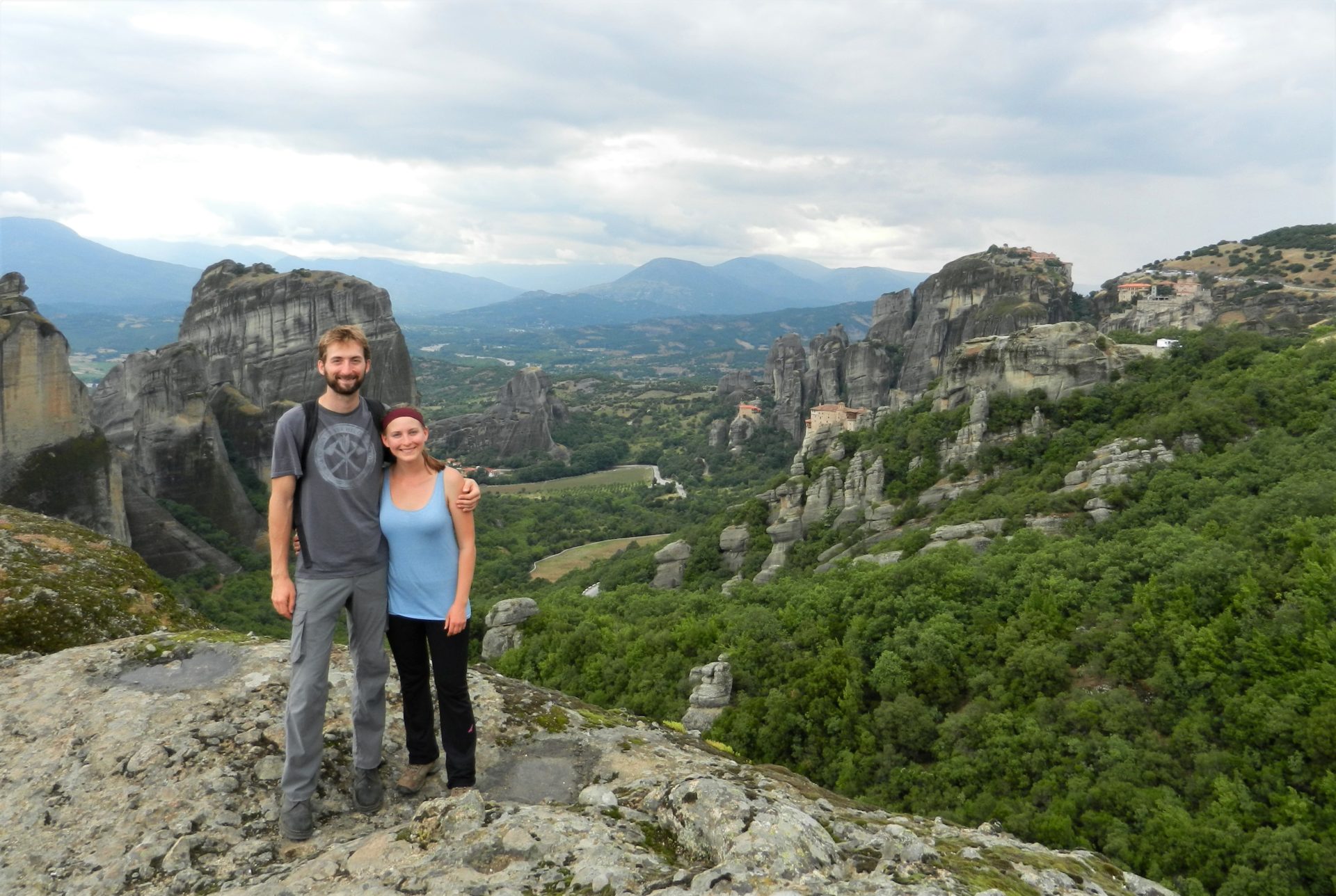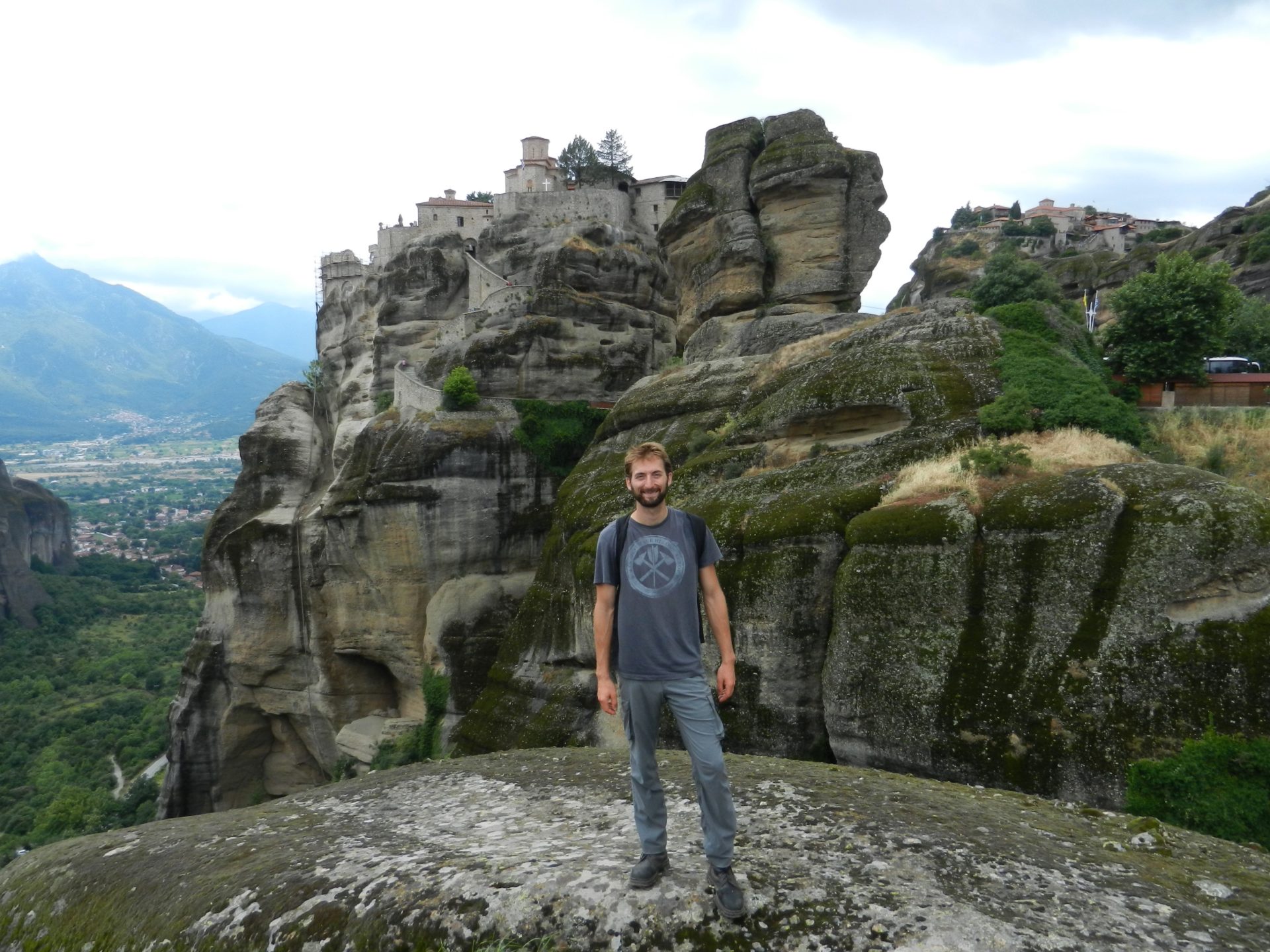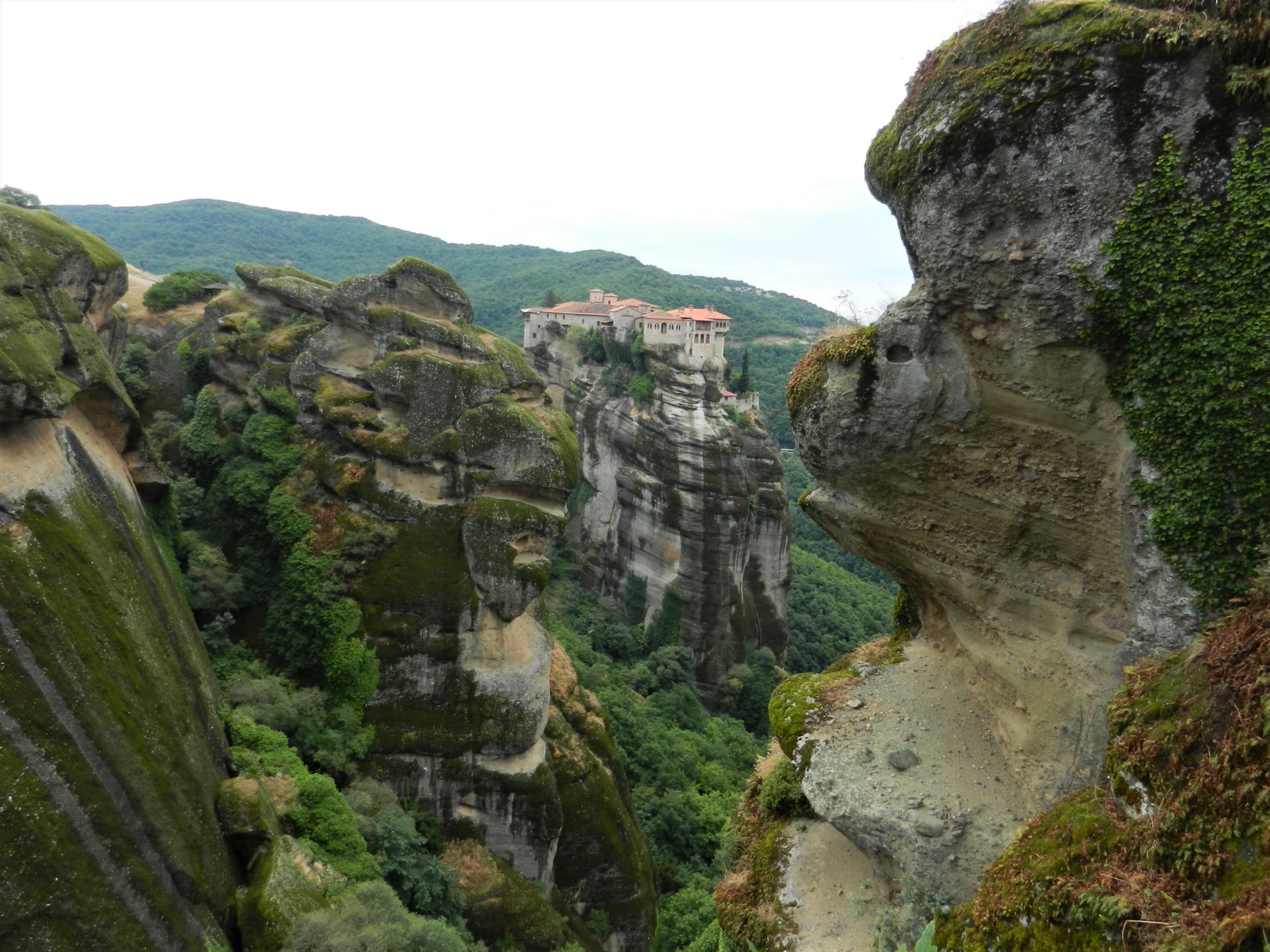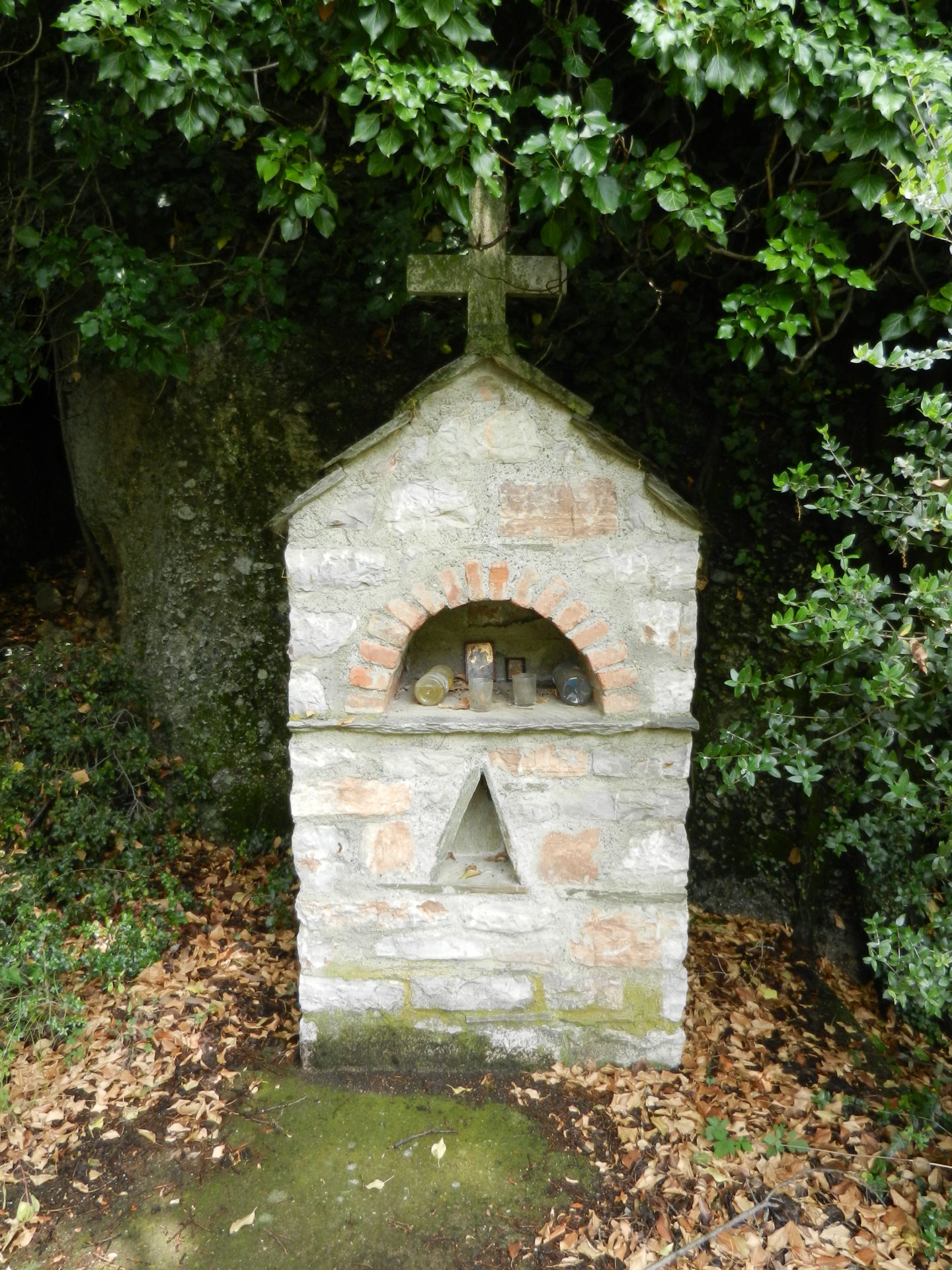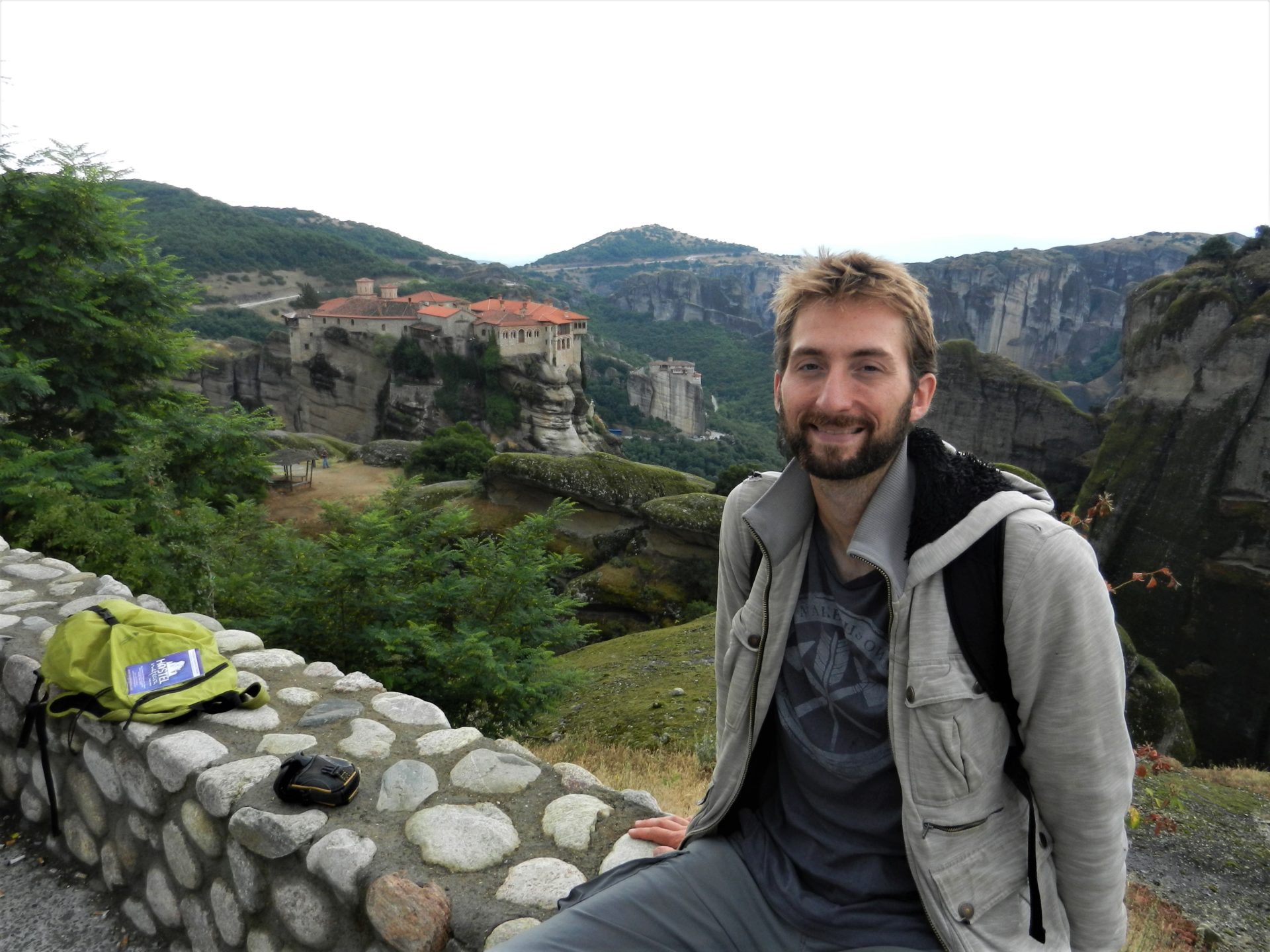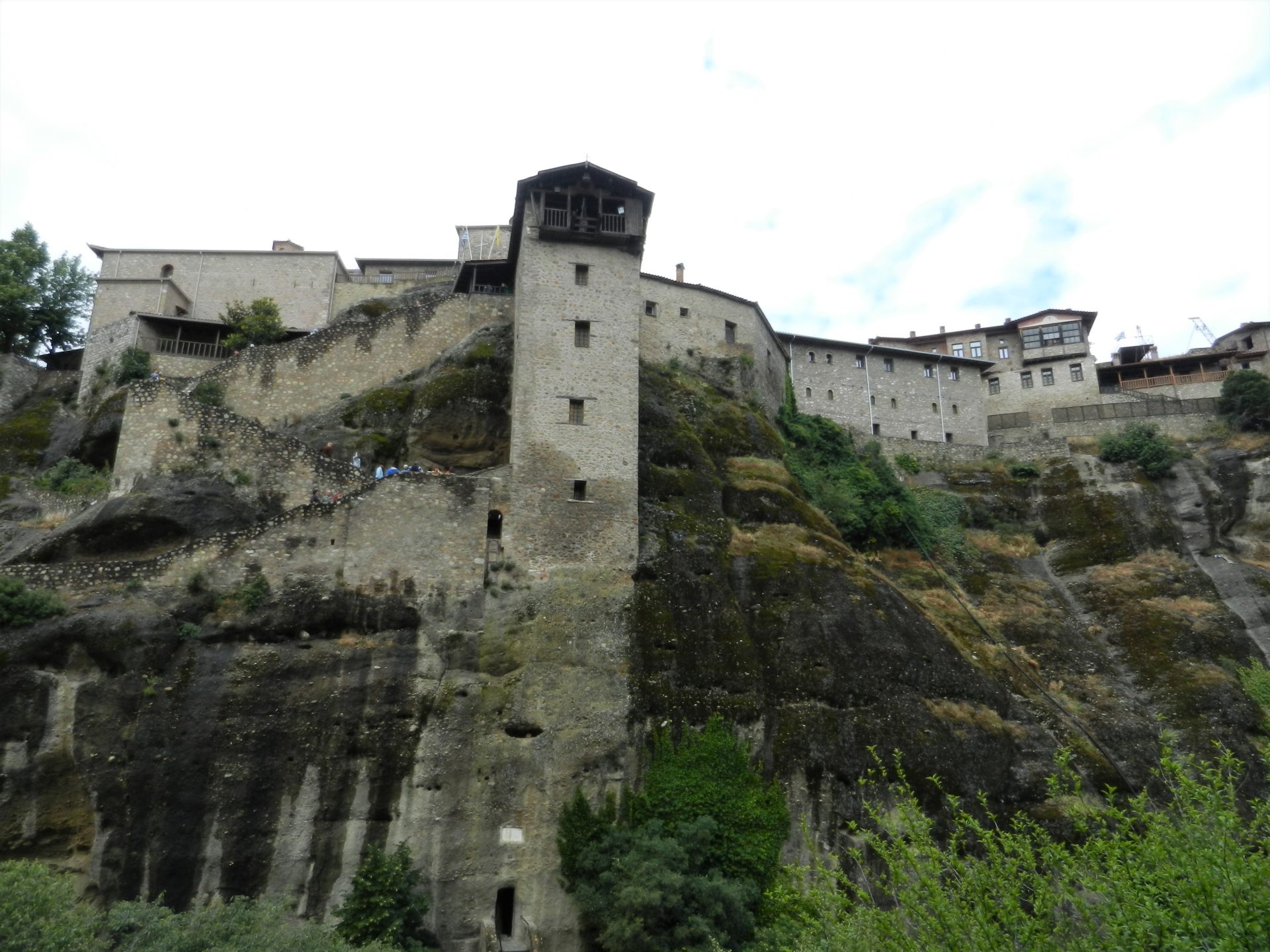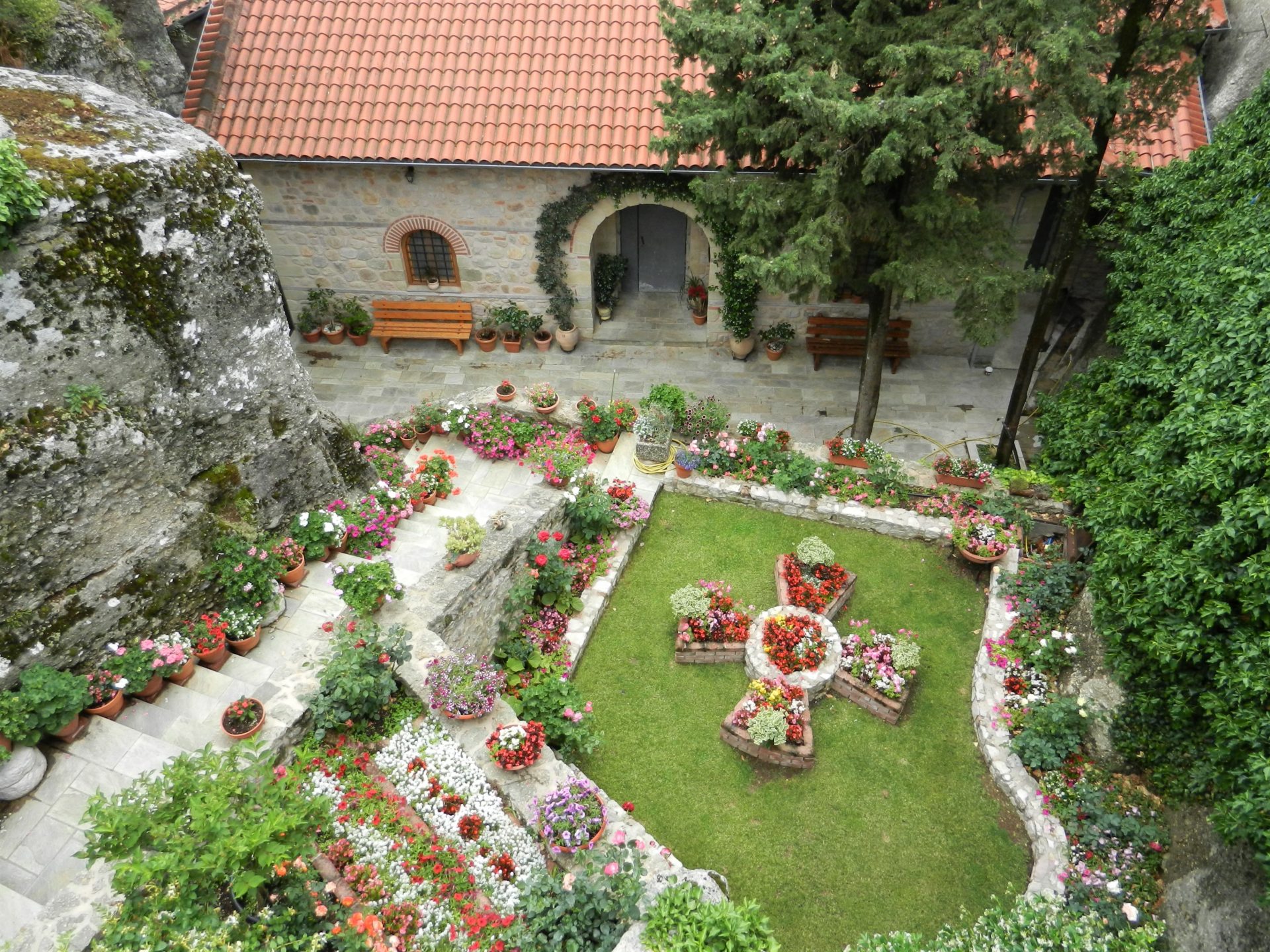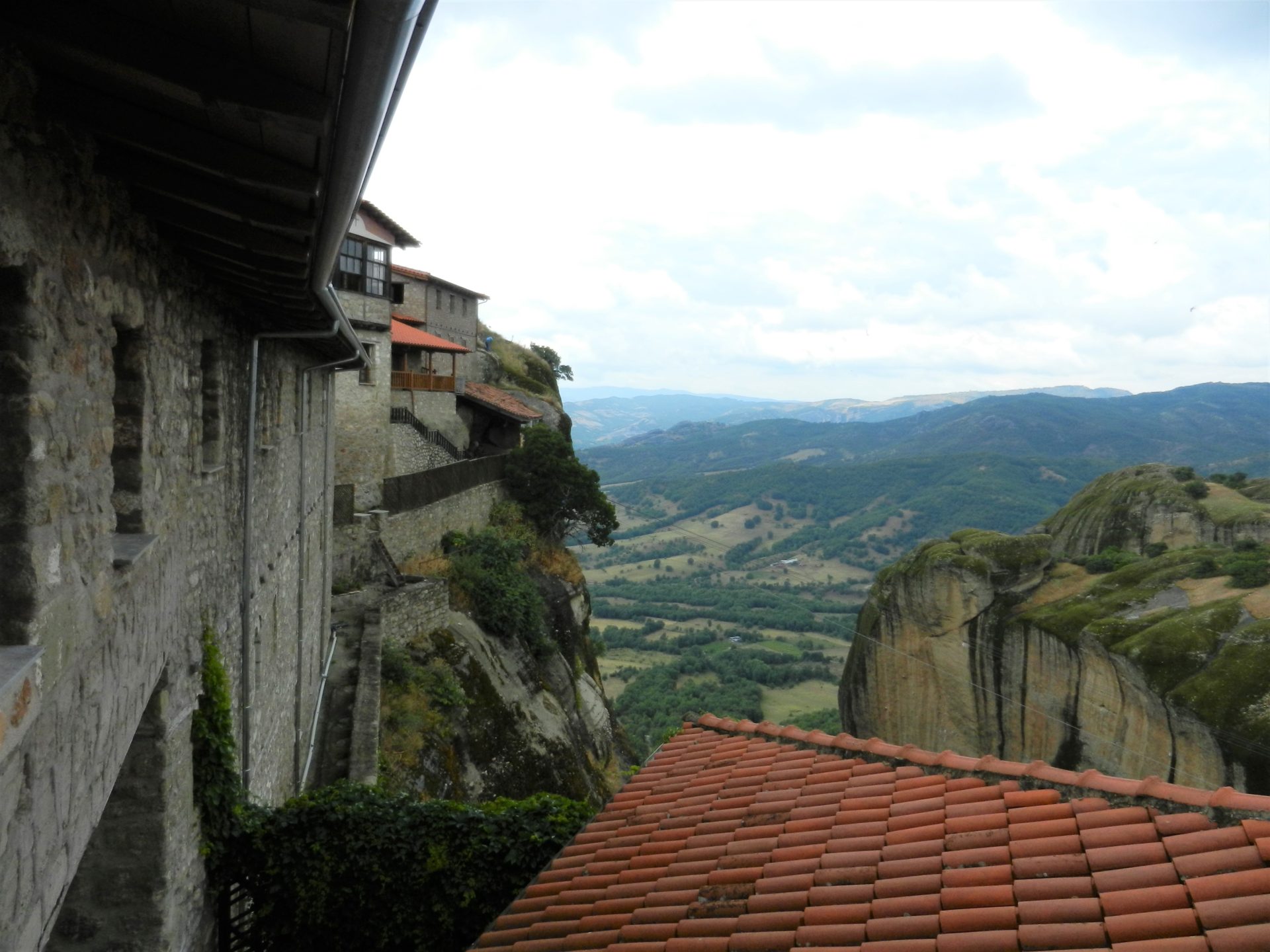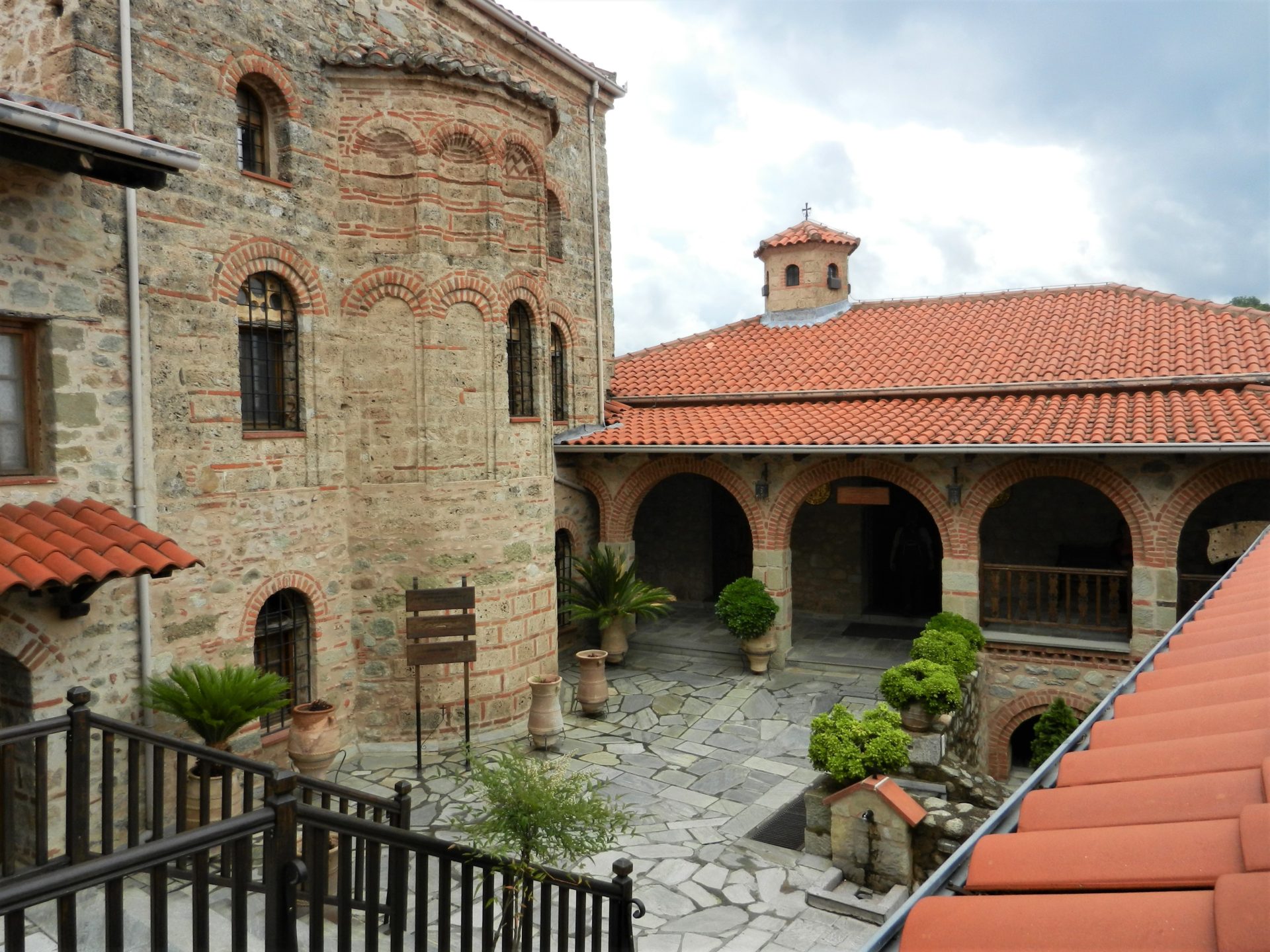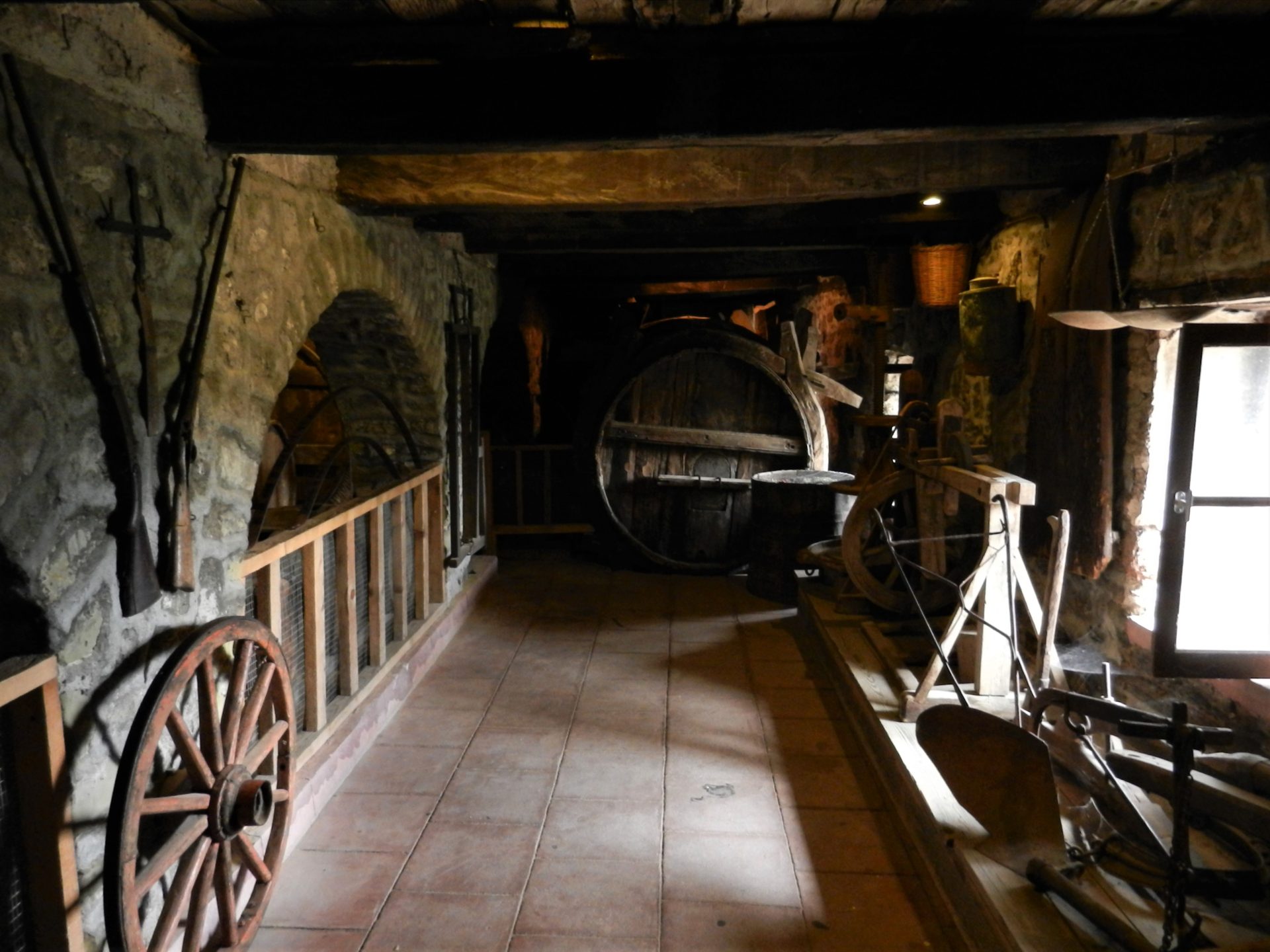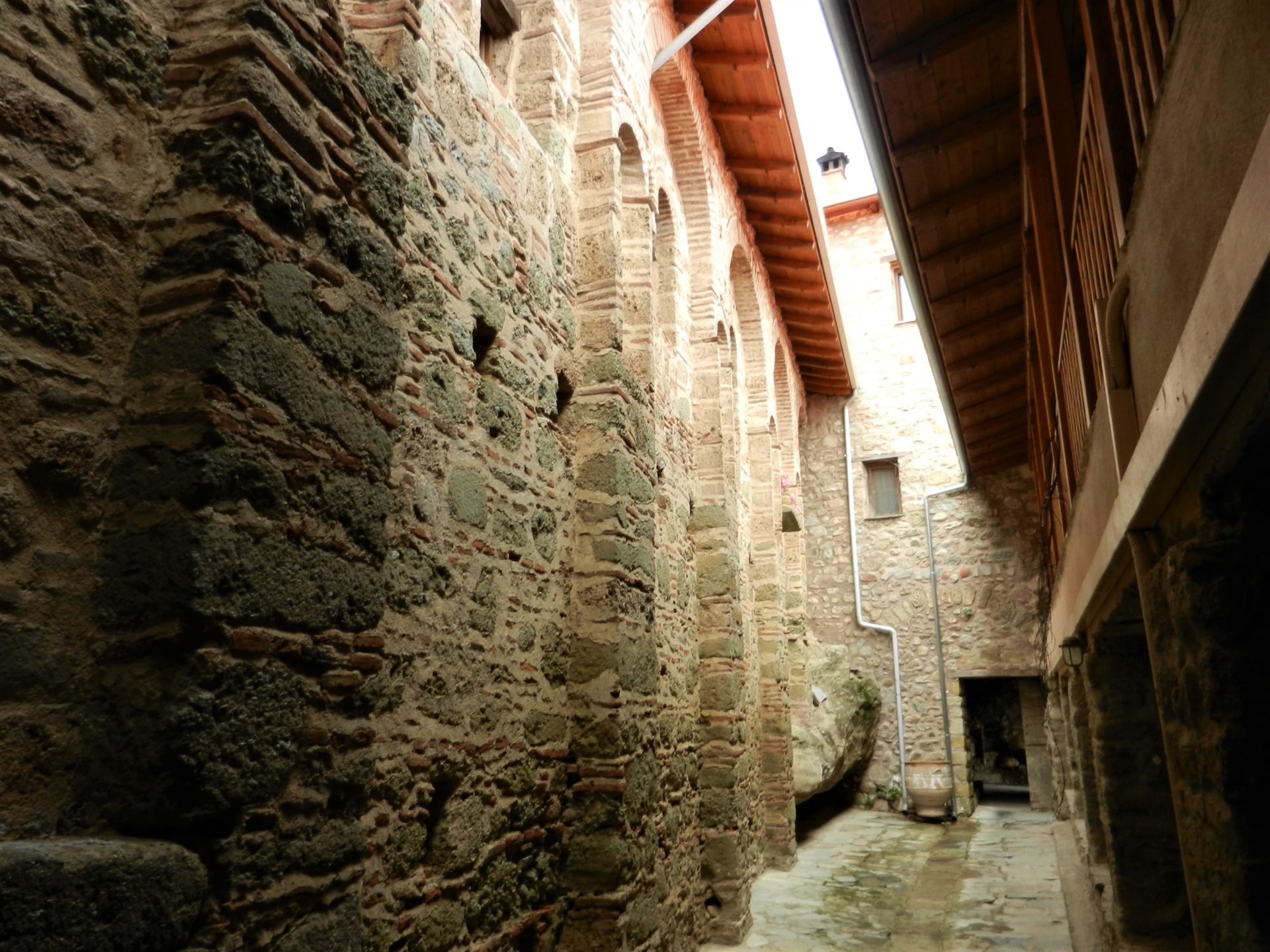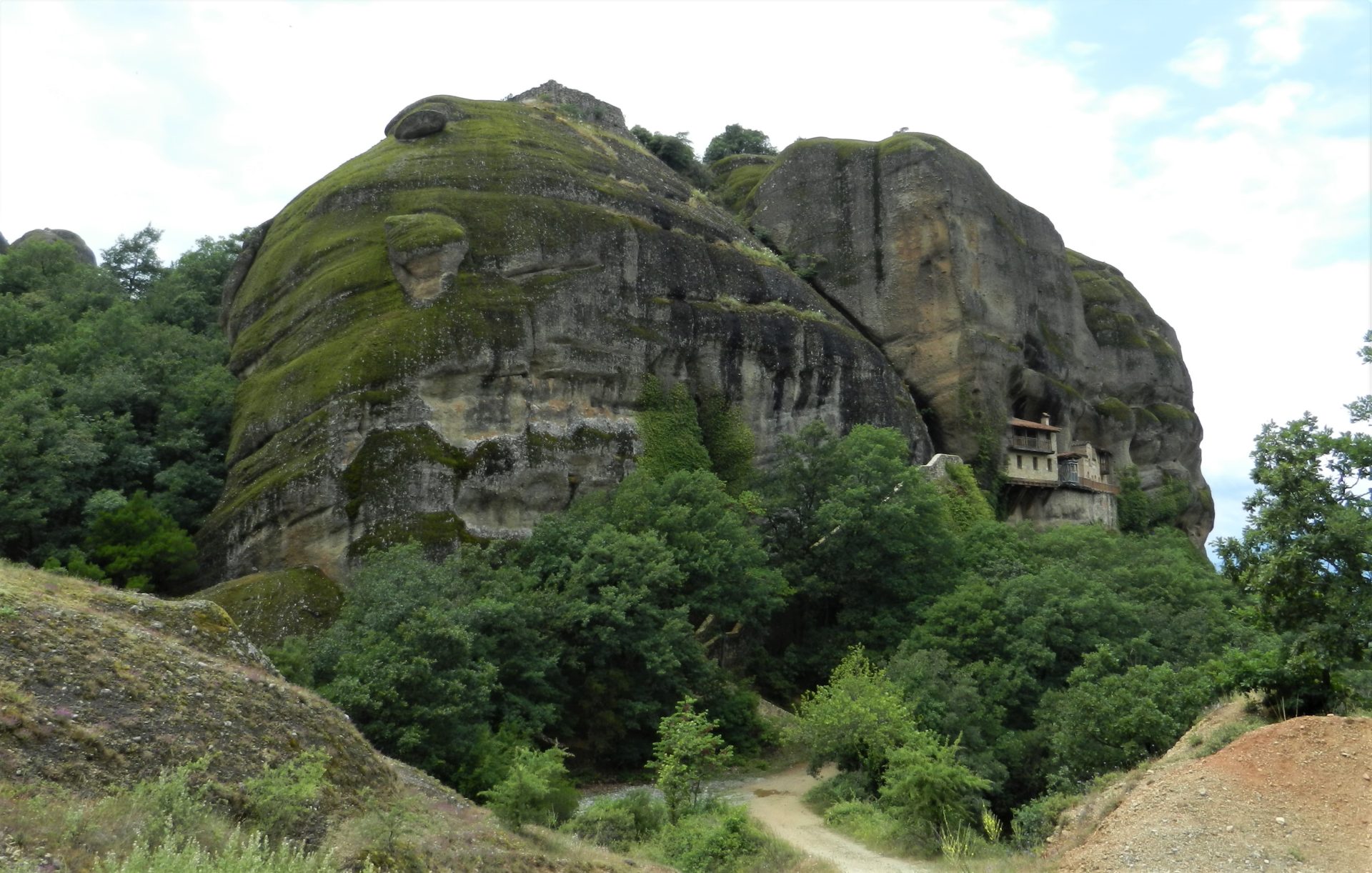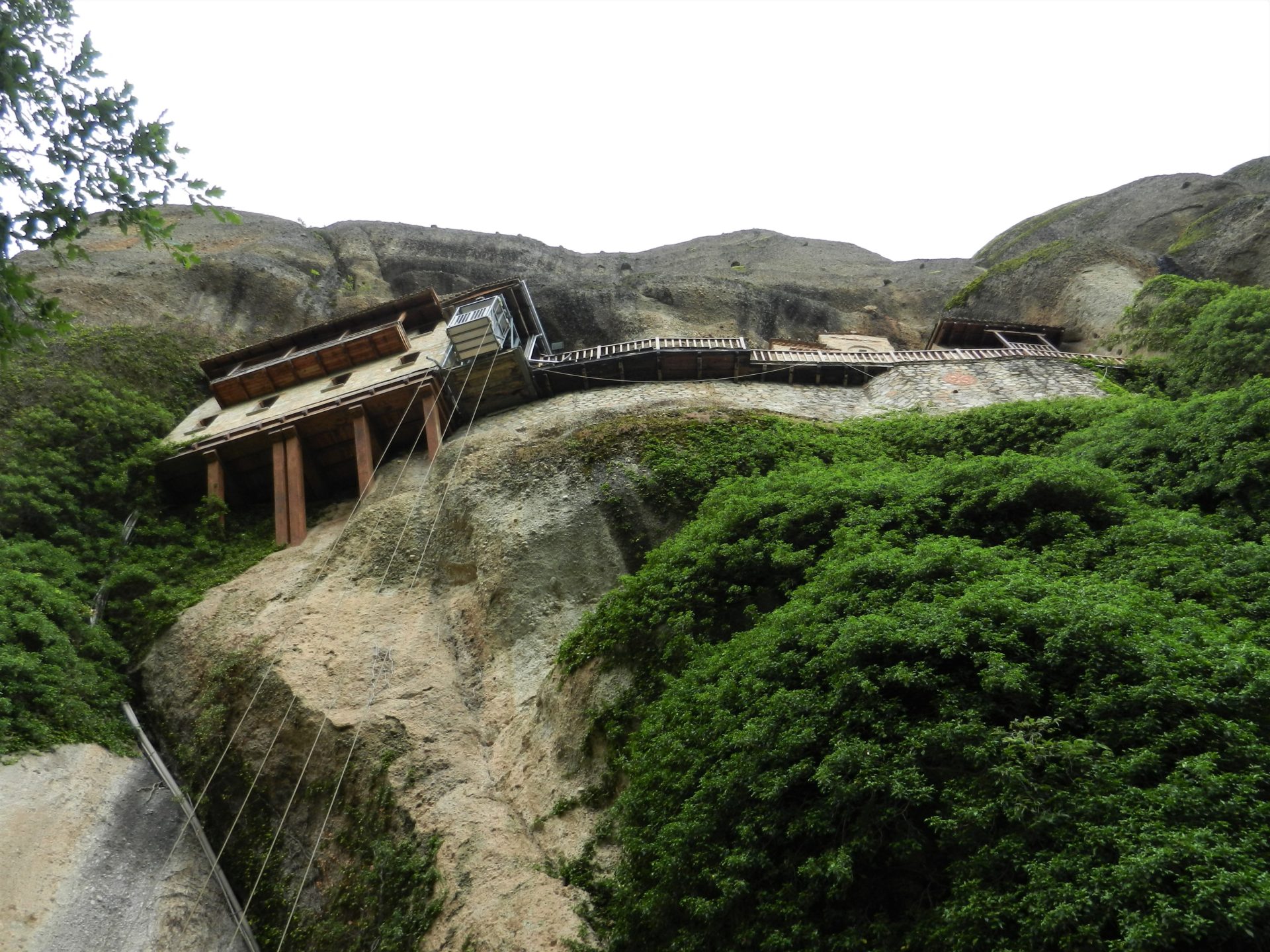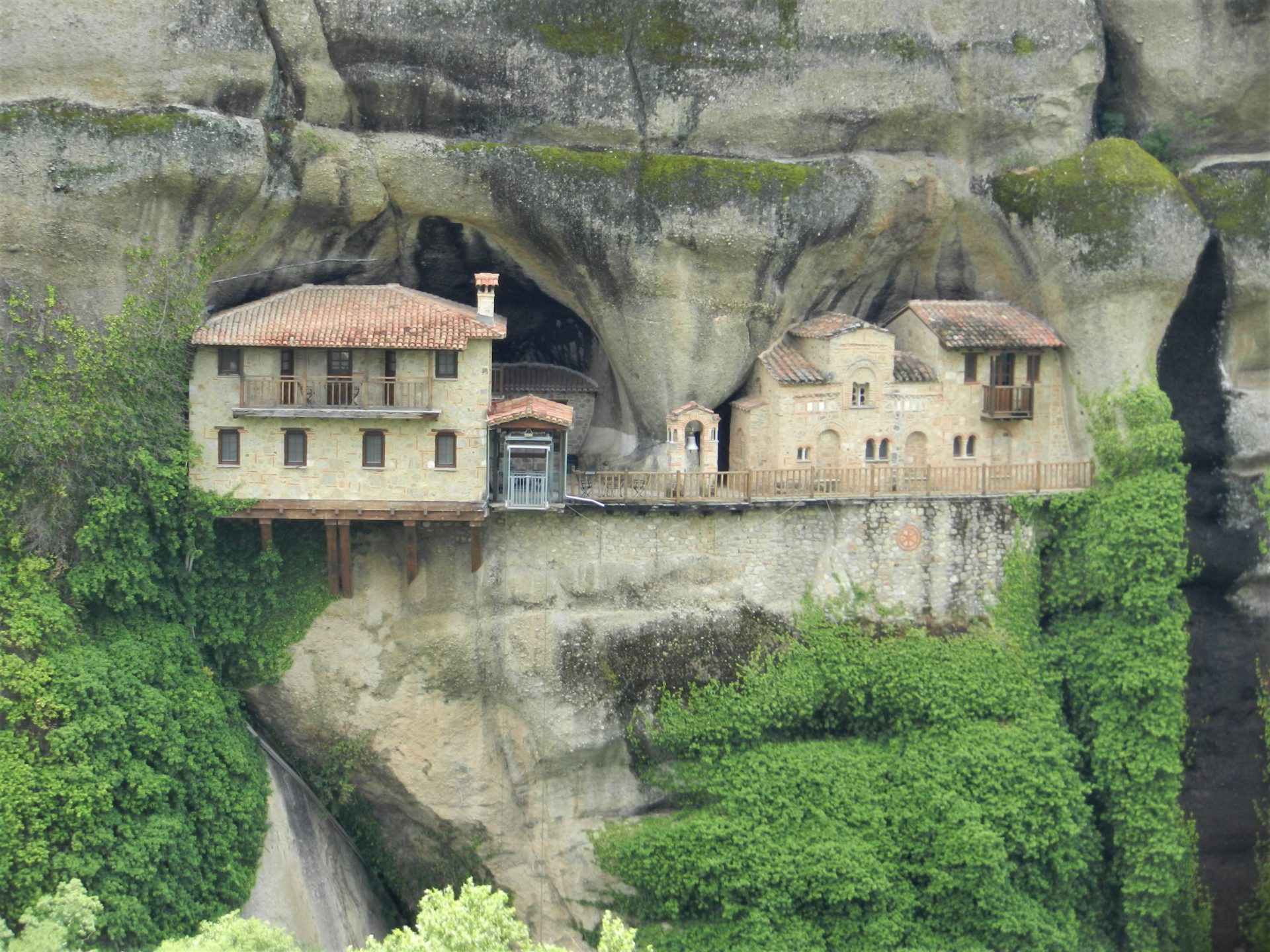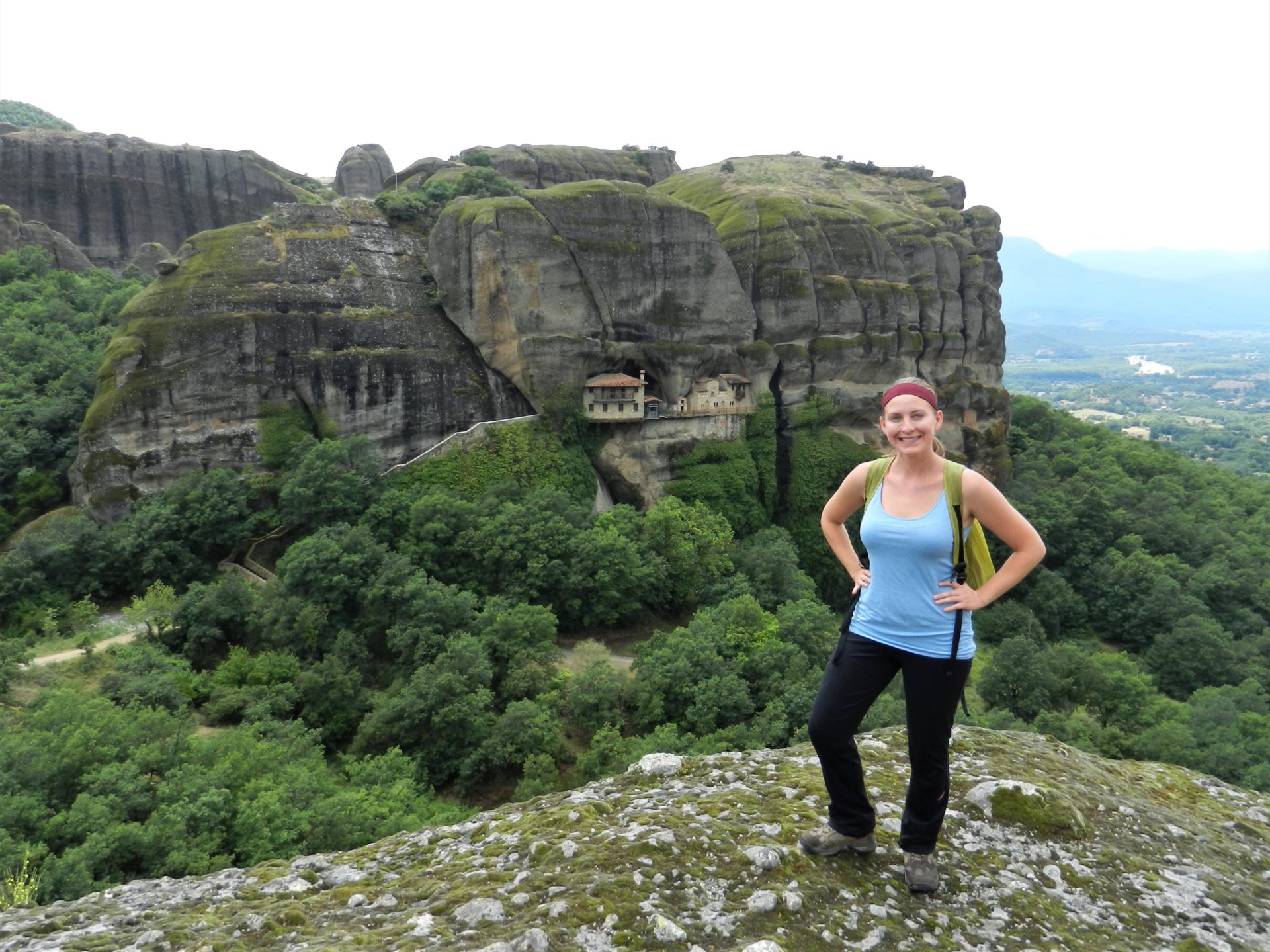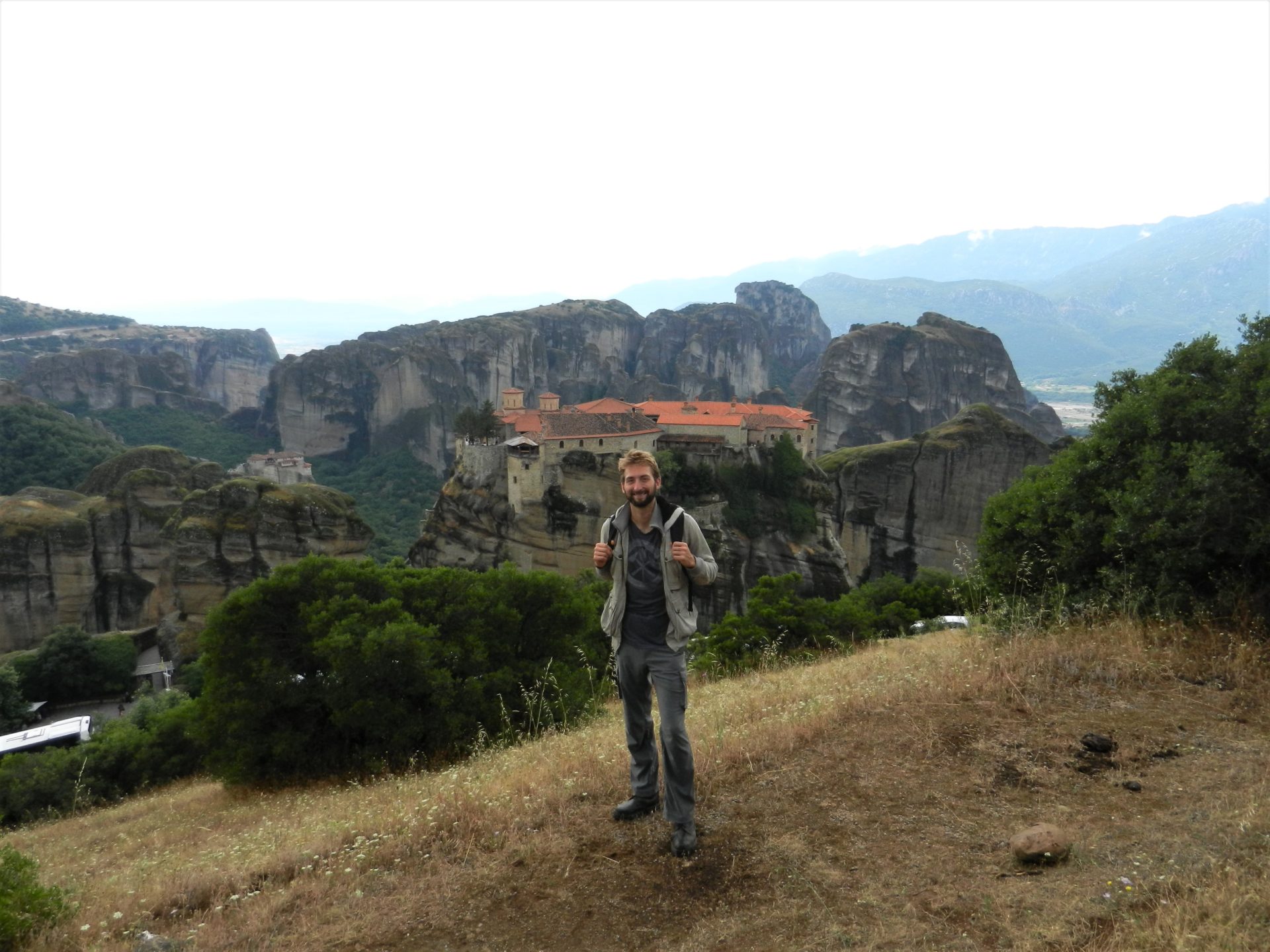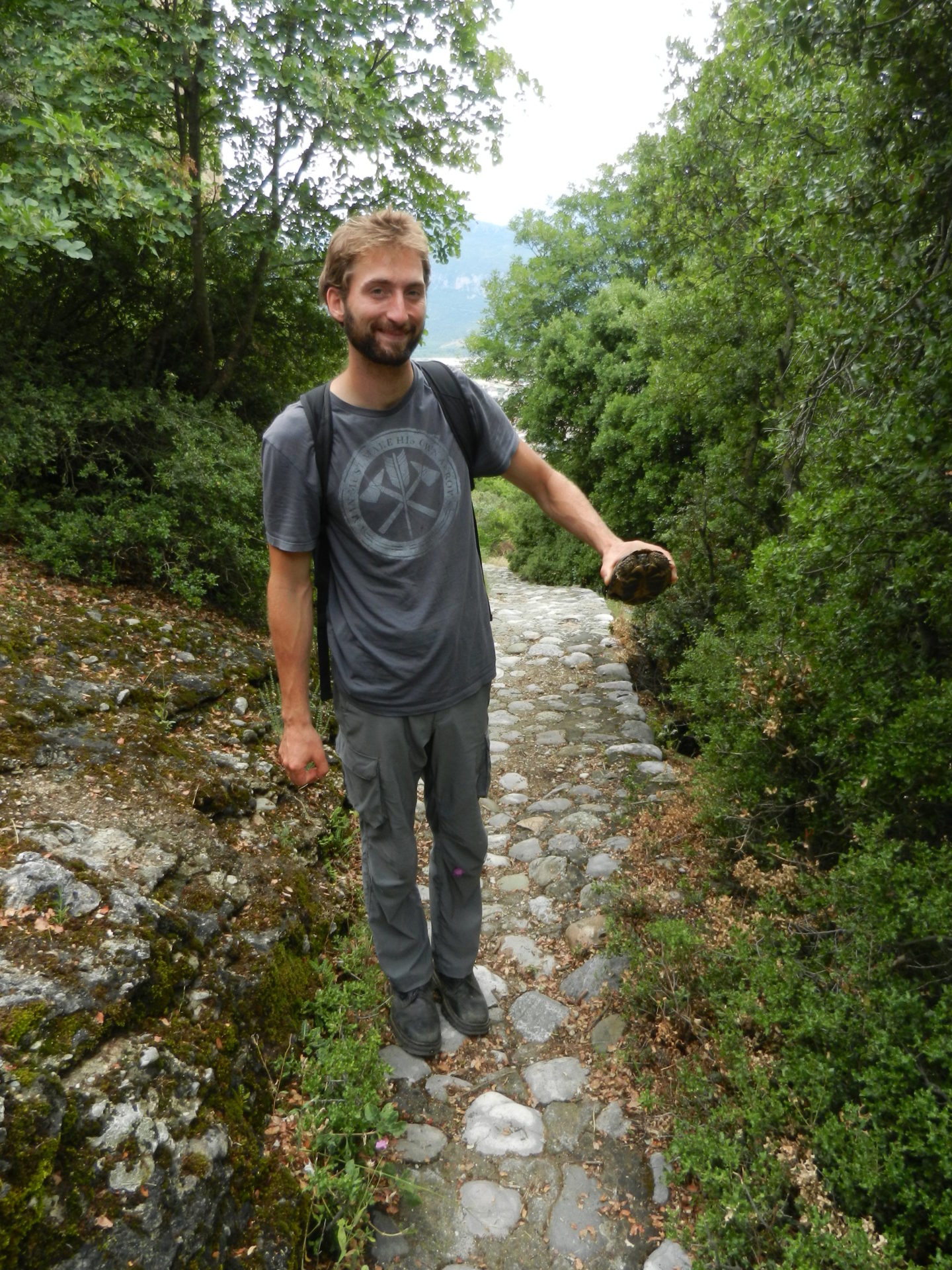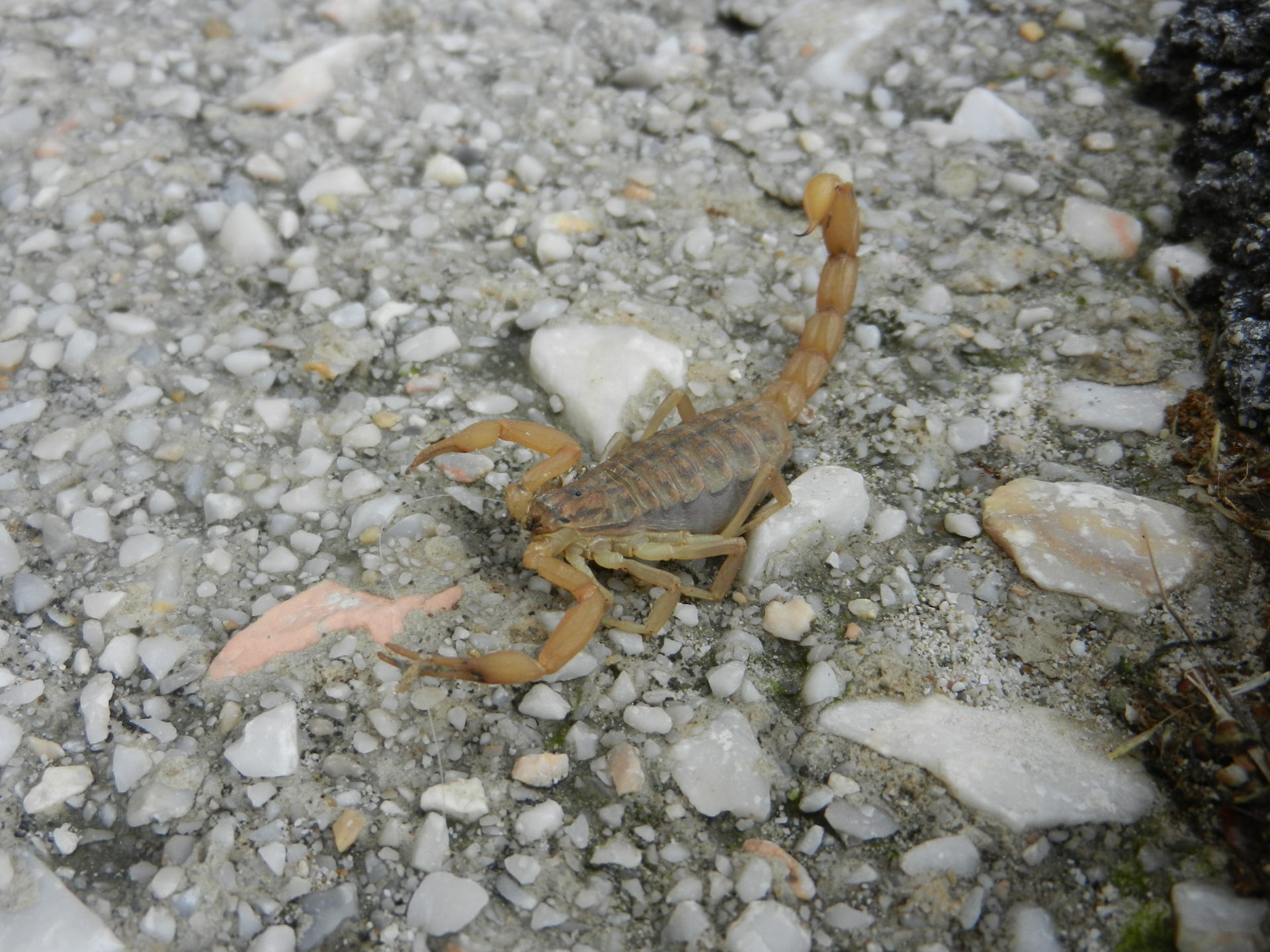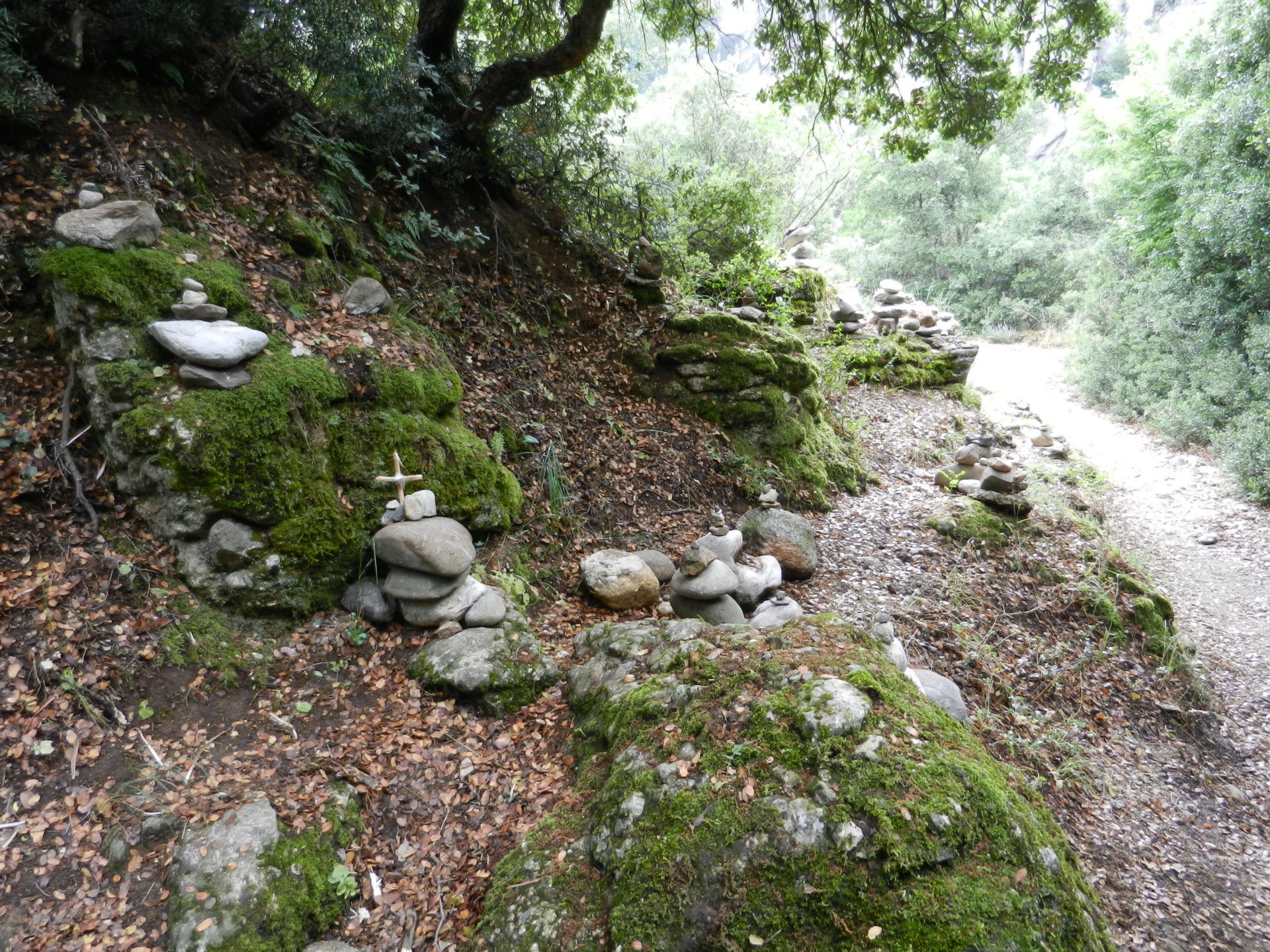It has been awhile since my last post! Life has been busy, but we have long been wanting to continue our blog and finish posting about our epic journey. Leaving the mythology and wonder of Delphi behind, we hopped on a bus bound for Meteora. Meteora is a popular pilgrimage for those wishing to visit one of the most spectacular complexes of Eastern Orthodox monasteries.
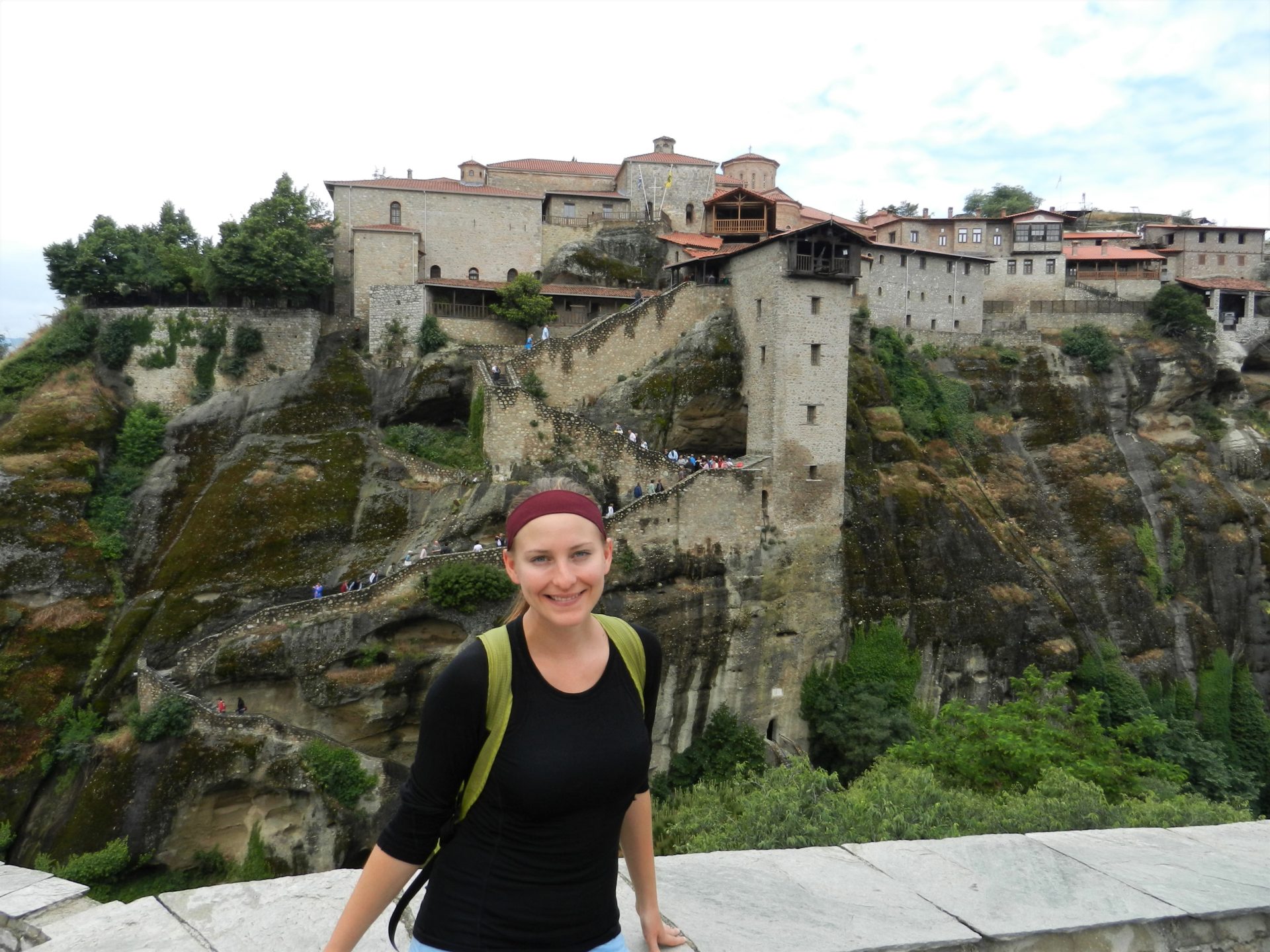
Monasteries of Meteora
It’s difficult to know where to begin because Meteora is a phenomenal area in so many ways. Meteora means “hovering in the air”, which seems fitting as you gaze up at this complex of monasteris perched on steep, stone towers.

Geologically-speaking, Meteora is both impressive and a little unusual. Meteora is set alongside the Pindos Mountain range and the area is dominated by enormous, naturally-formed pillars of stone. The awe-inspiring pillars we see today are a combination of sandstone and conglomerate. They have been sculpted by elements and fault lines over millennia.
The caves scattered throughout Meteora have been inhabited for millennia. Recent discoveries suggest that caves in the area were more or less continuously occupied from 135 000 to 4000 BC. Temporary use of the caves likely continued up to very recent times. These sites have produced a wealth of discoveries giving insight into human life during the Paleolithic, Mesolithic, and Neolithic periods. Pretty incredible!
The monasteries of Meteora, however, are one of the most popular reasons to explore this region. Monks likely began inhabiting the area in the 11th century. By the 16th century there were 24 monasteries at Meteora, of which six are still functioning today. These are the Great Meteoron Monastery, Varlaam, St. Stephen’s, St. Nikolaos Anapafsas, Holy Trinity, and Roussanou monasteries. At the time of their construction they provided a holy retreat; a safe haven from the increasing threat of Turkish raiders. Today they remain a popular pilgrimage, a glimpse into Eastern Orthodox tradition and rich, cultural history.
We stayed in the nearby town of Kalambaka, a popular spot to stay just outside of Meteora. If you have time and energy, you can certainly hike up to the monasteries. We opted to take a bus up the mountain as we were a little short on time and keen to see as much as possible. KTEL Trikalon is the main bus company in the area and for a very reasonable fare (1.80 € for a single ride, 5.50 € for a day pass as of 2019) will take you from town up to and between the monasteries.
Be sure to check the days/hours of operation of the monasteries when planning your visit as they differ by season and monastery! Entrance fees for each monastery are also a very reasonable 3 € per person (as of 2019). Keep in mind that these are still functioning monasteries which have been generous enough to open their doors to the public. Everyone is required to dress respectfully when entering the monasteries. Generally this means longer sleeves for both men and women, longer shorts/pants for men, and ideally long skirts for women. The monasteries will likely have skirts and shawls available, but better to be prepared on your own just in case.
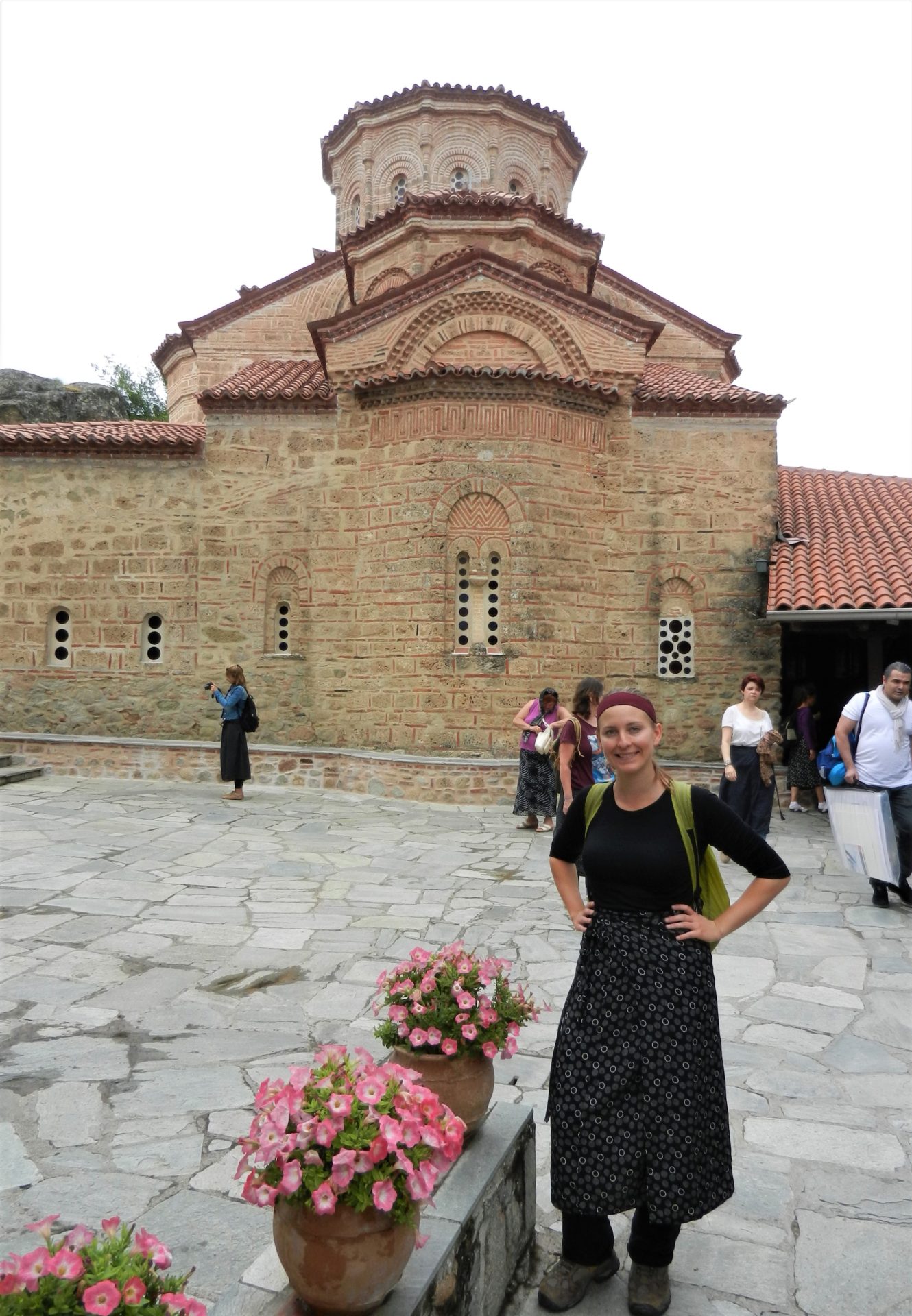
We didn’t have the best weather while visiting unfortunately, but that didn’t stop us from wanting to make the most of our visit! We began our trek at the Great Meteoron Monastery. This is the oldest and largest of the monasteries of Meteora. Founded by Saint Athanasios in the 14th century, today you can have a glimpse at monastery life and take in breath-taking views. From there we spent our day hiking around the hills visiting the monasteries and taking in the incredible vistas.
Ypapanti Monastery
A trail leading from the main road will take you further back into the hills towards Ypapanti Monastery. Where the other monasteries are perched on top of stone pillars, Ypapanti Monastery is actually set into a cavity. We weren’t able to go inside unfortunately (though it is open to visitors), but it’s a great side trip!
As the day began to dwindle to a close, we ventured our way down footpaths to the base of the stone pillars. I highly recommend taking these trails as a scenic way to end your pilgrimage to the monasteries of Meteora. There are trails leading back to both Kastraki village and Kalambaka.
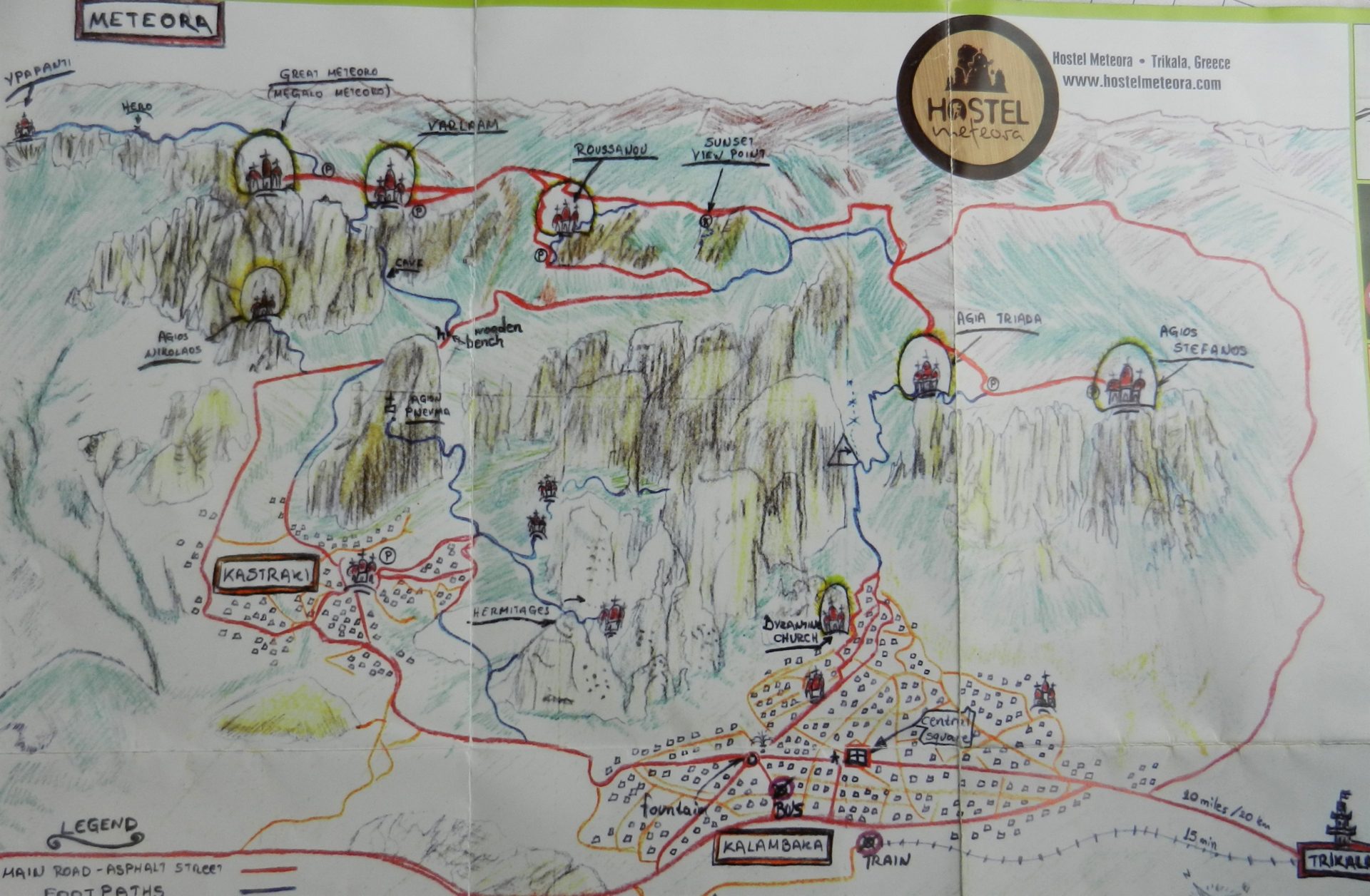
Meteora should be on the list of anyone wishing to experience the wonders of Greece. While it would have been great to have more sunshine in our pictures, we had an incredible time hiking through the dramatic landscape and visiting this piece of religious history. We will be back in Greece in a few weeks, but for now we’re off to Albania next!
